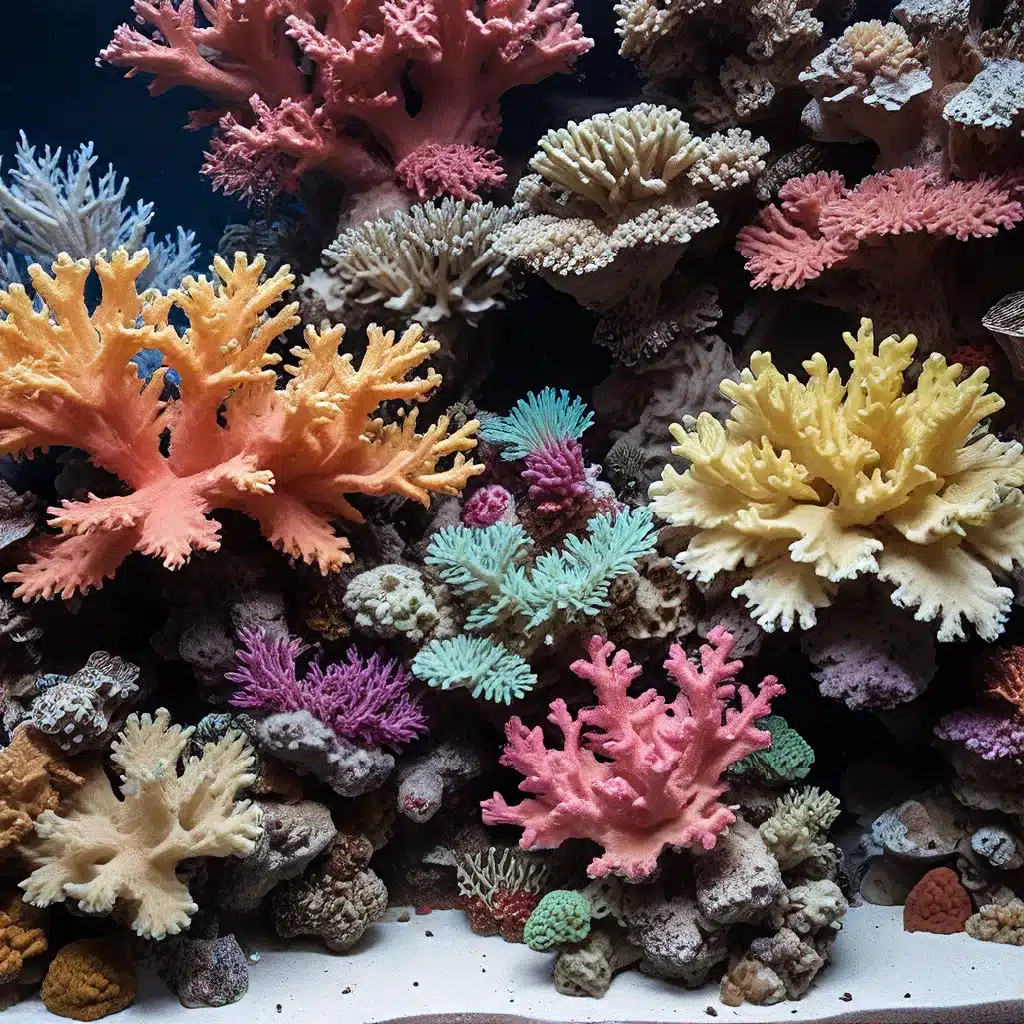
Creating a thriving coral reef aquarium is a delicate balance of art and science. From carefully selecting the right coral species to strategically positioning them within the tank, every decision plays a crucial role in the health and vibrancy of your underwater ecosystem. In this comprehensive guide, we’ll dive deep into the world of coral placement and growth strategies, equipping you with the knowledge to cultivate a visually stunning and biologically diverse reef.
Understanding Coral Growth Patterns
Corals are remarkable organisms that exhibit diverse growth patterns, each with unique care requirements. Branching corals, such as staghorn and elkhorn corals, are known for their rapid growth and intricate structures. These corals thrive in high-flow environments and require careful placement to prevent overcrowding and competition for resources. On the other hand, encrusting corals, like certain zoanthids and mushroom corals, prefer to grow horizontally, spreading across the substrate to create a vibrant, carpet-like appearance. Mastering the placement and growth strategies for each coral type is key to achieving a balanced and visually stunning reef.
Strategizing Coral Placement
Coral placement is a critical aspect of aquascaping, as it directly impacts the overall aesthetic and functionality of your reef. When arranging corals, consider their growth patterns, lighting requirements, and water flow preferences to create a harmonious and thriving ecosystem.
One effective strategy is to group similar coral species together, allowing them to grow in a complementary manner and minimize competition for resources. This approach can enhance the visual appeal of your reef by creating distinct zones or “neighborhoods” of color and texture. For example, clustering a collection of vibrant, fast-growing branching corals in one area can create a dramatic focal point, while positioning slower-growing, encrusting corals in another section can provide a serene backdrop.
When placing corals, consider the directionality of water flow and lighting within your aquarium. Positioning high-flow corals near the top or along the edges of the tank, where the water movement is strongest, can encourage their natural growth patterns and minimize the risk of overgrowth. Conversely, slower-growing, low-light corals should be placed in more shaded areas or lower levels of the aquarium to ensure they receive the optimal amount of illumination.
Enhancing Coral Growth and Resilience
Maintaining the health and vibrance of your coral reef goes beyond just strategic placement. Implementing targeted growth and resilience-building strategies can significantly improve the long-term success of your aquarium.
One proven technique is the use of fragmentation and fragging. By carefully cutting and propagating healthy coral fragments, you can not only expand the diversity of your reef but also promote the growth of more resilient, genetically diverse colonies. This approach can help your corals withstand environmental stressors, such as changes in water parameters or disease outbreaks.
Additionally, investing in high-quality lighting and water filtration systems can greatly enhance coral growth and coloration. LED lighting, for instance, can be precisely tuned to provide the optimal spectrum and intensity for photosynthetic corals, while advanced filtration techniques, like protein skimmers and ozone generators, can help maintain pristine water quality and minimize the buildup of waste products that can inhibit coral growth.
Restoring Damaged Reefs
In the face of growing environmental threats, such as climate change, pollution, and physical damage, many coral reefs around the world are in dire need of restoration. As conscientious aquarists, we have the opportunity to contribute to these conservation efforts by implementing innovative techniques learned from organizations like the NOAA Coral Reef Conservation Program.
One such approach involves the collection and propagation of coral fragments that have been broken off or detached from their native reef. By carefully transporting these fragments to a controlled environment, such as a coral nursery, and allowing them to regrow and establish new colonies, we can actively contribute to the restoration of damaged ecosystems. This process not only helps to rebuild coral populations but also introduces genetically diverse individuals that may be more resilient to future threats.
Moreover, the removal of invasive algae and the reintroduction of natural predators can help to re-establish the delicate balance of a reef system. By clearing away the overgrowth of non-native algae that can smother and suffocate coral colonies, we can create the necessary conditions for the corals to thrive and regain their vibrant hues.
Balancing Aesthetics and Ecosystem Health
Ultimately, the key to crafting a truly successful reef aquarium lies in the delicate balance between aesthetic appeal and ecosystem health. By thoughtfully considering coral placement, growth strategies, and restoration techniques, you can create a visually stunning underwater landscape that also supports a diverse and resilient community of marine life.
As you embark on your journey to build a thriving reef, remember to stay curious, experiment, and continuously learn from the vast wealth of knowledge available within the aquarium community. By joining forces with organizations like the King Aquarium, you can tap into expert guidance and resources to ensure the long-term success of your aquarium and contribute to the preservation of these invaluable ecosystems.

